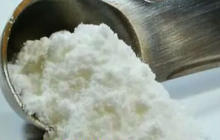Heart failure with preserved ejection fraction (HFpEF) occurs when the heart muscle contracts normally (medically defined as a left ventricular ejection fraction (LVEF) ≥50 percent), but the ventricle does not fill with enough blood, so less blood can enter the heart compared with a normally functioning heart. Over half of patients with heart failure have HFpEF, and there are no available medications that have been proven to clearly reduce HF outcomes in people with HFpEF.
Until now.
At the European Society of Cardiology meeting this week, the much anticipated EMPEROR-preserved study results were presented, and published simultaneously in the New England Journal of Medicine.
The EMPEROR-Preserved study investigated the safety and efficacy of the SGLT2 inhibitor empagliflozin (Jardiance) 10mg daily vs placebo, in patients with chronic heart failure with preserved ejection fraction (HFpEF). The trial enrolled 5,988 patients with LVEF >40%, with or without T2DM, eGFR≥20, NYHA class II-IV. The primary endpoint was a composite of time to first event of either hospitalization for heart failure, or cardiovascular death.
About half of patients in the study had T2DM, half had chronic kidney disease, and 35% had ischemic heart failure. Participants were 45% female, 76% Caucasian (14% Asian, only 4% were of Black ethnicity). At baseline, the average LVEF was 54%, and average BMI was 30 kg/m2. Just over 80% of patients were on either an ACE or ARB or ARNI, and 37% were on a mineralocorticoid receptor antagonist.
Over a median of 26 months, the primary endpoint occurred in 13.8% of patients in the empagliflozin group vs 17.1% of the placebo group, for a reduction in risk of 21%. In other words, just 31 patients needed to be treated to prevent one event. This benefit was mainly driven by a 29% reduction in hospitalization for heart failure; the risk of death was not reduced in this study (neither CV death nor all-cause mortality). Empagliflozin also protected kidney function in this study (slower rate of eGFR decline).
The benefits were similar in people with vs without type 2 diabetes, and there was no significant difference in benefit in people with LVEF <50% vs 50-59% vs ≥60%. The overall safety data was in keeping with what we already know of the SGLT2i class, with a slightly higher risk of hypotension (low blood pressure) and genital yeast infections. There was a slightly higher risk of urinary tract infections (UTIs) with empagliflozin (9.9%) than with placebo (8.1%), which hasn’t been seen in most of the SGLT2i studies. In clinical practice, I have seen the occasional patient developing recurrent UTIs with SGLT2i’s [any of empagliflozin, canagliflozin (Invokana), or dapagliflozin (Forxiga)], in which case I recommend stopping it.
As noted by the authors, the pattern of benefits seen in the EMPEROR-Preserved study are similar to the similar study of patients with HFrEF (EMPEROR-Reduced), suggesting that the effects of SGLT2i on HF events do not vary meaningfully with the HF phenotype.
The SGLT2 inhibitor dapagliflozin is currently under study as a treatment of HFpEF.
BOTTOM LINE: Empagliflozin is the first available medication proven to be of clear benefit in HFpEF heart failure patients. The benefit is enjoyed in people with or without type 2 diabetes.
As noted in the accompanying editorial, this trial should contribute to a change in clinical practice, given the paucity of therapeutic options available for patients with heart failure and a preserved ejection fraction.
Disclaimer: I receive honoraria as a continuing medical education speaker and consultant from the makers of empagliflozin (Boehringer Ingelheim/Eli Lilly), dapagliflozin (Astra Zeneca), and canagliflozin (Janssen). I have been involved as an investigator in clinical trials of dapagliflozin.
Share this blog post using your favorite social media link below!
Follow me on twitter! @drsuepedersen
www.drsue.ca © 2021












